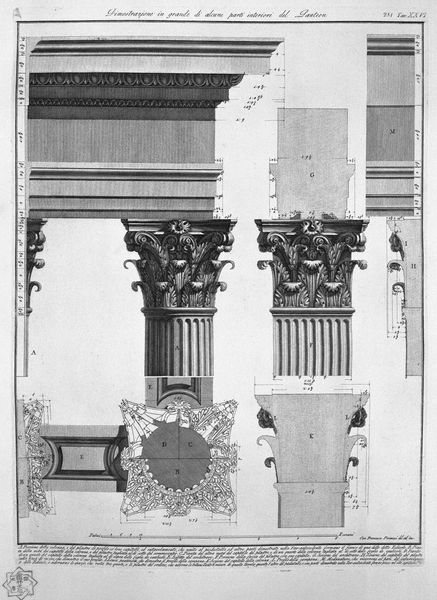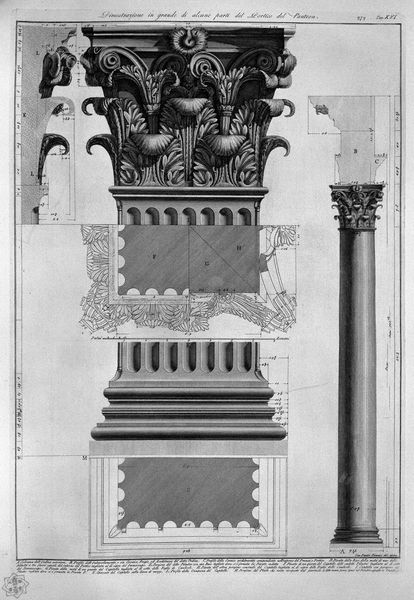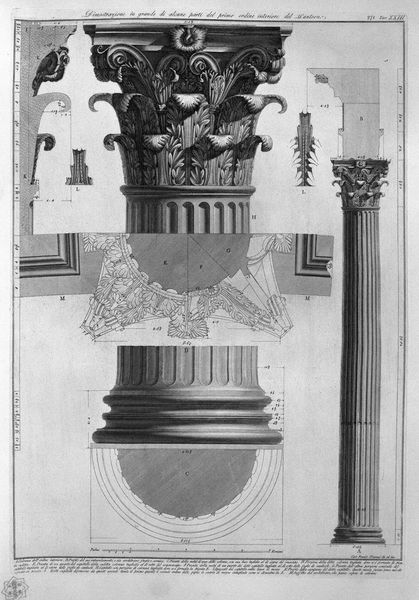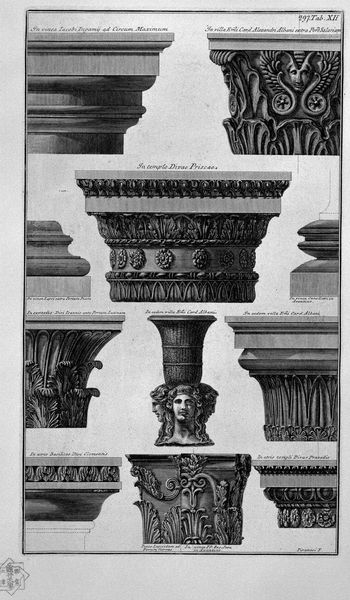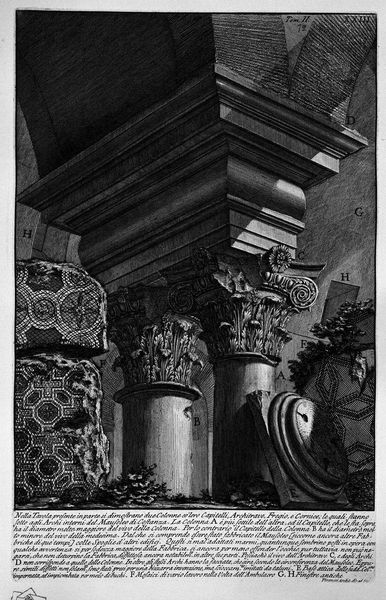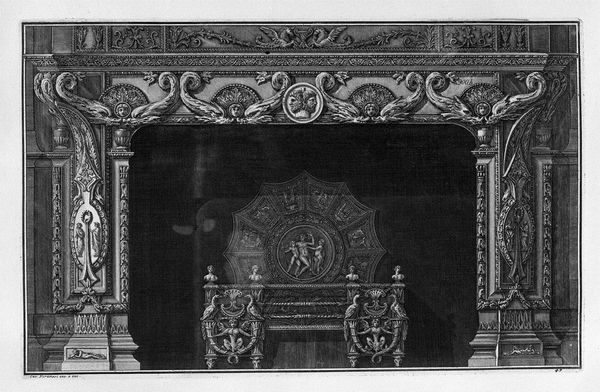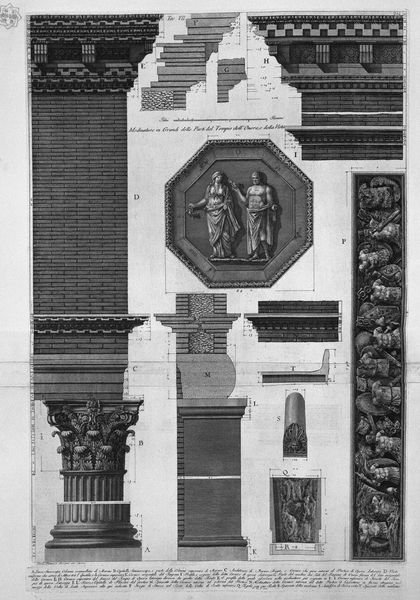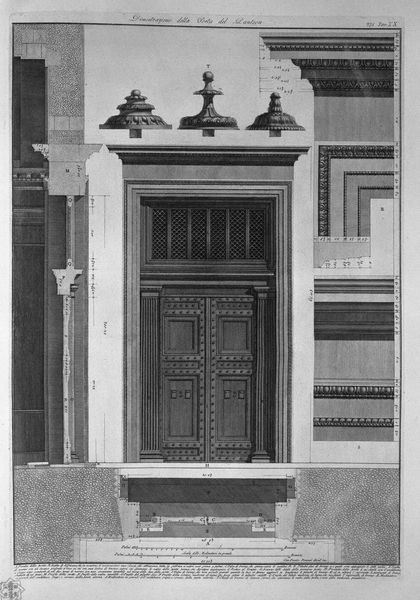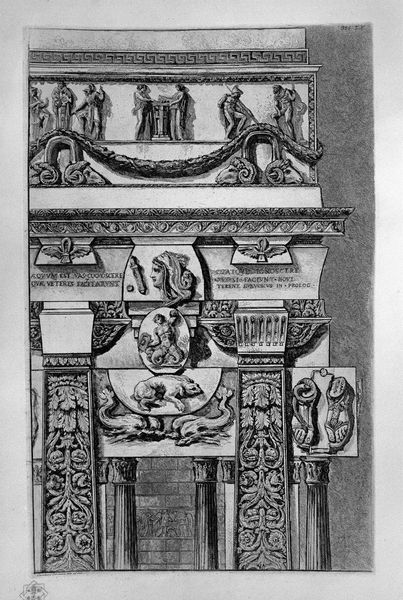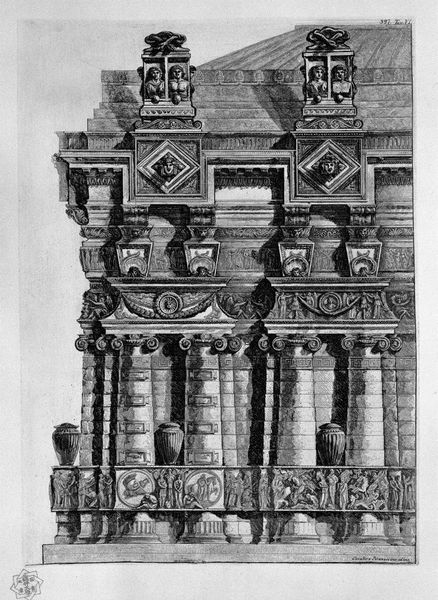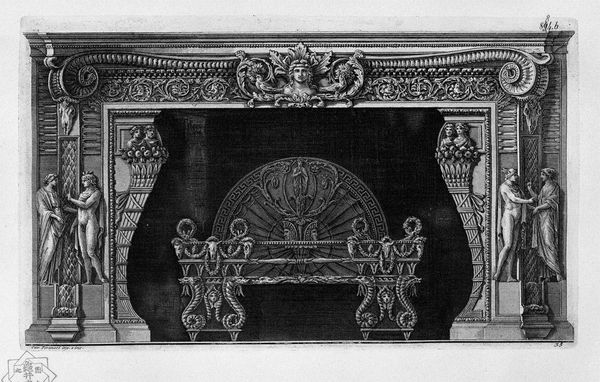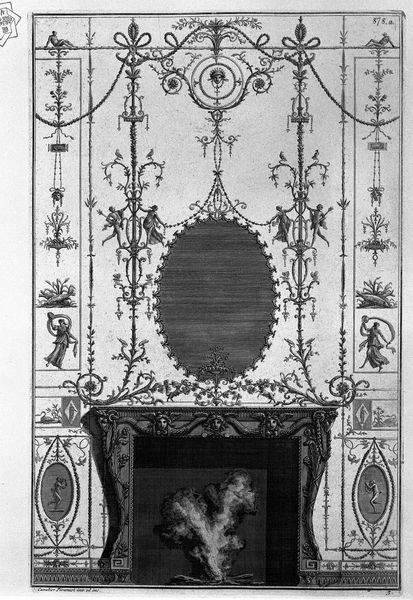
drawing, etching, paper, ink, pen, engraving, architecture
#
drawing
#
neoclacissism
#
etching
#
perspective
#
charcoal drawing
#
paper
#
historic architecture
#
form
#
ink
#
geometric
#
classicism
#
arch
#
line
#
pen
#
academic-art
#
charcoal
#
engraving
#
architecture
#
monochrome
Copyright: Public domain
This etching by Giovanni Battista Piranesi meticulously depicts architectural details of the Pantheon's portico. Note the Corinthian capital, adorned with acanthus leaves, symbols of regeneration and immortality since ancient Greece. This motif did not originate here, however. We can trace these undulating forms back to Egyptian and Near Eastern art, where stylized plant forms were used to invoke nature's abundance. Over time, the acanthus evolved, finding its way into Roman architecture as an emblem of order and prosperity. The human psyche imbues such forms with meaning, linking them to primal experiences of growth and decay. Piranesi, through his precise rendering, invites us to contemplate the enduring power of these ancient symbols. They resonate within us, bridging the gap between past and present, as our subconscious connects with the collective memory embedded in these classical forms. Such symbols do not progress linearly; instead, they resurface, carrying echoes of their past while adapting to new cultural landscapes. Their cyclical return reminds us of the interconnectedness of human experience across time.
Comments
No comments
Be the first to comment and join the conversation on the ultimate creative platform.

